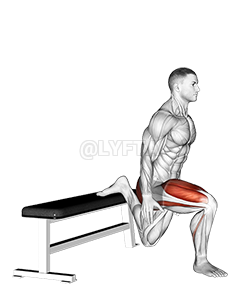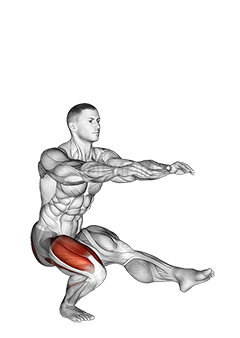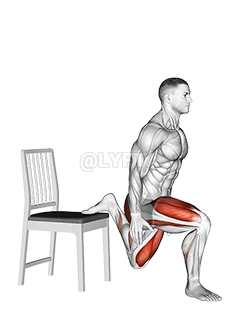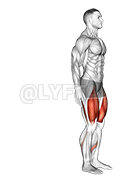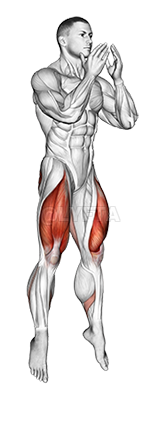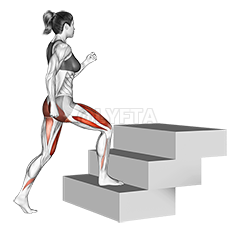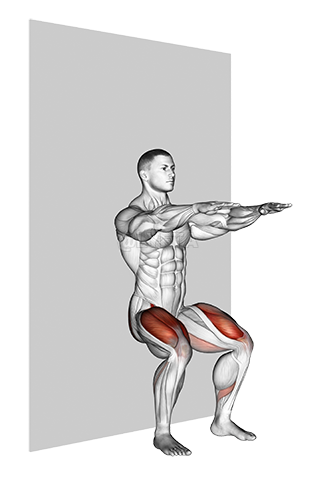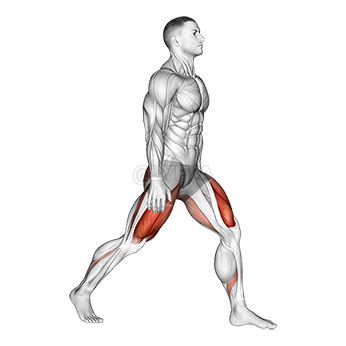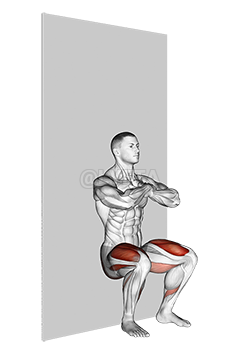
Squat
Exercise Profile
Related Exercises:
Introduction to the Squat
The Squat is a comprehensive lower body exercise that targets key muscle groups such as the quadriceps, hamstrings, and glutes, while also engaging the core. This exercise is suitable for individuals of all fitness levels, from beginners to advanced athletes, due to its scalable intensity and form variations. Incorporating squats into a workout routine can aid in building strength, improving balance and mobility, and enhancing overall body function and fitness.
Performing the: A Step-by-Step Tutorial Squat
- Slowly bend your knees and lower your body as if you're about to sit on a chair, keeping your chest upright and your knees over your toes.
- Continue lowering yourself until your thighs are parallel or almost parallel to the floor, this is the squat position.
- Pause for a moment in the squat position, then push through your heels to rise back up to the starting position.
- Repeat this movement for the desired number of repetitions while maintaining proper form.
Tips for Performing Squat
- **Avoiding Knee Overextension:** A common mistake is extending the knees too far forward, beyond the toes. This can put unnecessary pressure on the knees and lead to injury. Instead, make sure your knees are aligned with your feet during the squat.
- **Depth of Squat:** Aim for a deep squat where your hips go below your knees. However, do not compromise on form or safety to achieve this. If you can't squat that deep without losing form, it's better to do a shallower squat.
- **Breathing Technique:** Your breathing technique can greatly influence your performance. Inhale as you lower your body and exhale as you push yourself back up
Squat FAQs
Can beginners do the Squat?
Yes, beginners can definitely do the squat exercise. Squats are a foundational movement that can help build lower body strength and stability. However, it's important for beginners to start with proper form to avoid injury. This might include starting with bodyweight squats before adding weights. It can also be helpful to have a trainer or more experienced exerciser check your form.
What are common variations of the Squat?
- Sumo Squat: In this variation, you position your feet wider than hip-width apart, with your toes pointing outwards, before squatting down.
- Jump Squat: This is a more dynamic version where you jump explosively as you come up from the squat.
- Pistol Squat: This is an advanced variation where you perform a squat on one leg with the other leg extended straight out in front of you.
- Front Squat: In this variation, you hold a barbell in front of your body at shoulder height while performing a squat.
What are good complementing exercises for the Squat?
- Deadlifts complement squats by targeting the posterior chain muscles like the hamstrings and glutes, which are used in squats but not as the primary movers, thus ensuring balanced strength development in the lower body.
- Calf raises can supplement squats by focusing on the lower leg muscles, particularly the gastrocnemius and soleus, which are often overlooked in squats, helping to enhance overall leg strength and stability.
Related keywords for Squat
- Bodyweight Squat exercise
- Quadriceps strengthening exercises
- Thighs workout
- Home workout for thighs
- Squatting for muscle gain
- Bodyweight exercises for quadriceps
- Lower body workout
- Fitness routine for thighs
- Quadriceps home workout
- Squat exercise for leg strength
